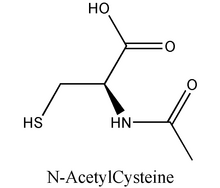Friedman AN, Bostom AG, Laliberty P, et al. Am J Kidney Dis 2003;41:442-446.
BACKGROUND: The chronic hemodialysis population has an accelerated rate of cardiovascular morbidity and death. Furthermore. elevated levels of the putative atherotbrombotic risk factor homocysteine are almost ubiquitous in this population. Attempts to normalize elevated plasma total homocysteine (tHcy) levels in dialysis patients using pharmacological-dose vitamin therapy or other strategies generally have been unsuccessful. Preliminary uncontrolled evidence suggests that Nacetylcysteine (NAC) may be an effectivc tHcylowering agent. We designed a randomized placebo-controlled study to determine the effect of prolonged oral NAC therapy on lowering tHcy levels in vitamin-replete chronic hemodialysis patients. METHODS: Thirty-eight subjects were treated before intervention with a standard dialysis vitamin supplement to ensure a uniform vitamin-replete state. They were then block randomized to treatment with NAC, 1.2 g twice a day, for 4 weeks or matched placebo. RESULTS: There were no significant baseline differences between the two groups, although differences in pyridoxal 5'-phosphate (active form of vitamin B(6)) levels approached significance (P = 0.06). In a paired analysis, there was no statistically significant difference between the NAC and placebo groups. NAC was very well tolerated in hemodialysis patients. CONCLUSION: This randomized placebo-controlled trial found that chronic oral NAC therapy did not significantly reduce tHcy levels in hemodialysis patients. Although a larger sample size theoretically could have increased the statistical significance between groups, implications of the potentially very modest reduction in tHcy levels are not yet known. Finally, based on this limited study, NAC appears to be a safe and well-tolerated therapy in the hemodialysis population.
COPYRIGHT 2003 Thorne Research Inc.
COPYRIGHT 2003 Gale Group



